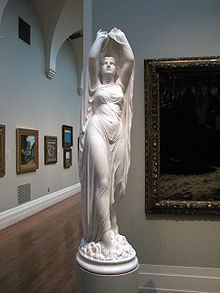Elemental: Difference between revisions
No edit summary |
Darkkelf99 (talk | contribs) No edit summary |
||
| Line 10: | Line 10: | ||
The exact term for each type varies somewhat from source to source, though these four are now the most usual. Most of these beings are found in [[folklore]] as well as alchemy; their names are often used interchangeably with similar beings from folklore.<ref>C.S. Lewis, ''The Discarded Image'', p135 ISBN 0-521-47735-2</ref> The sylph, however, is rarely encountered outside of alchemical contexts and fan media. |
The exact term for each type varies somewhat from source to source, though these four are now the most usual. Most of these beings are found in [[folklore]] as well as alchemy; their names are often used interchangeably with similar beings from folklore.<ref>C.S. Lewis, ''The Discarded Image'', p135 ISBN 0-521-47735-2</ref> The sylph, however, is rarely encountered outside of alchemical contexts and fan media. |
||
To this day, many people still believe in Elementals: those who work in Witchcraft and/or follow Nature-based Religions. |
To this day, many people still believe in Elementals{{citation needed}}: those who work in Witchcraft and/or follow Nature-based Religions. |
||
The basic concept of an elemental refers to the ancient idea of [[Classical elements|elements]] as fundamental building blocks of nature. In the system prevailing in the [[Classical antiquity|Classical]] world, there were four elements: fire, earth, air, and water. This [[Wiktionary:paradigm#Noun|paradigm]] was highly influential in [[Middle Ages|Medieval]] [[natural philosophy]], and Paracelsus evidently intended to draw a range of mythological beings into this paradigm by identifying them as belonging to one of these four elemental types. |
The basic concept of an elemental refers to the ancient idea of [[Classical elements|elements]] as fundamental building blocks of nature. In the system prevailing in the [[Classical antiquity|Classical]] world, there were four elements: fire, earth, air, and water. This [[Wiktionary:paradigm#Noun|paradigm]] was highly influential in [[Middle Ages|Medieval]] [[natural philosophy]], and Paracelsus evidently intended to draw a range of mythological beings into this paradigm by identifying them as belonging to one of these four elemental types. |
||
Revision as of 22:01, 23 September 2011

An elemental is a mythological being first appearing in the alchemical works of Paracelsus in the 16th century. Traditionally, there are four types:[1]
- gnomes, earth elementals
- undines, Also known as Nymphs, water elementals
- sylphs, air elementals
- salamanders, fire elementals.
The exact term for each type varies somewhat from source to source, though these four are now the most usual. Most of these beings are found in folklore as well as alchemy; their names are often used interchangeably with similar beings from folklore.[2] The sylph, however, is rarely encountered outside of alchemical contexts and fan media.
To this day, many people still believe in Elementals[citation needed]: those who work in Witchcraft and/or follow Nature-based Religions.
The basic concept of an elemental refers to the ancient idea of elements as fundamental building blocks of nature. In the system prevailing in the Classical world, there were four elements: fire, earth, air, and water. This paradigm was highly influential in Medieval natural philosophy, and Paracelsus evidently intended to draw a range of mythological beings into this paradigm by identifying them as belonging to one of these four elemental types.
See also
- Classical elements
- Elements in fiction
- Faerie, mythological being
- Gnome
- Salamander
- Sylph
- Undine
References
- "undine." Encyclopædia Britannica. 2006. Encyclopædia Britannica Online. 16 November 2006 <http://www.britannica.com/eb/article-9125706>.
- Theophrast von Hohenheim a.k.a. Paracelsus, Sämtliche Werke: Abt. 1, v. 14, sec. 7, Liber de nymphis, sylphis, pygmaeis et salamandris et de caeteris spiritibus. Karl Sudhoff and Wilh. Matthießen, eds. Munich:Oldenbourg, 1933.
